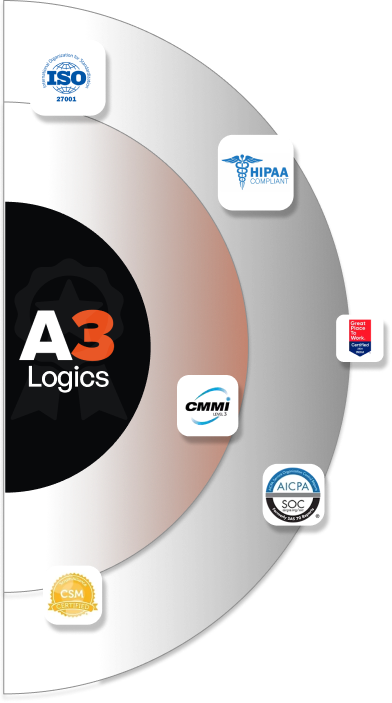Table of Contents
The Electronic Data Interchange or EDI is an innovation that assists exchanging organizations and partners with accomplishing courses of events and wiping out manual errors through business-to-business post automation. Implementing EDI solutions permit organizations that produce, craft, purchase, and sell products or offer types of assistance, for example, retailers, makers, insurers, health care providers, and carriers from there, the sky’s the limit.
EDI has been used since the 1960s, however, today is finding new use by empowering supply chain automation and going about as a critical piece of the work process for business process automation. Overall, towards the finish of this blog, you will have a genuinely strong understanding of EDI and a prologue to the nuts and bolts of EDI innovation.
Implementing EDI has been a vital component of the IT infrastructure for companies in a variety of industry sectors since it was widely used in business in the 1980s. Even now, it keeps expanding. Furthermore, according to the most current projections, the EDI market in the healthcare sector alone will be valued at $9,18 billion by 2030, representing an annual growth rate of 9.6%.
Likewise, EDI goes past the trading of organized data to permit organizations to profit from EDI transactions across their EDI in the supply chain. EDI innovation additionally takes into consideration secure file sharing – including Oversaw File Transfer – that can help offices like designing to trade huge computer-aided design or Product Lifecycle Management (PLM) files.
The Basic Concepts of EDI
EDI is a robotized PC-to-PC trade of standard electronic business records that happens between colleagues over a normalized and secure association.
With PC-to-PC communications, there is a compelling reason to depend on manual choices like email, realities, and postal mail. Furthermore, records move straightforwardly from the shipper’s PC application to the collector’s PC application. For example, a purchaser can send over a purchase request and the provider will naturally send over a receipt.
Many standard deal records can be spent consequently with Implementing EDI. Normal models incorporate purchase orders (EDI 850), shipping statuses (EDI 214), invoices, customs data, payment confirmations (EDI 820), and inventory reports.
The standard EDI design permits PCs to handle EDI archives. Standards portray each piece of data and the configuration, for example, the sort of report, the gatherings in question, the date normal, and the moves to make. Overall, the utilization of standards wipes out organization-to-organization varieties with the goal that every colleague’s PC framework communicates in a typical language.
EDI frameworks utilize different standards for different locales, enclosures, and businesses. The EDI standards have various variants, so EDI partners need to involve similar norms and renditions for the data to be appropriately streamed.
Among the most well-known standards are ANSI X12 utilized in the US, UN/EDIFACT which is utilized worldwide, and industry-explicit standards, like HIPAA compliance. EDI involves a scope of secure protocols for report trade. Partners need to concur upon the protocol and ensure they are utilizing a similar one before they can trade EDI documents. Overall, on the off chance that they don’t, they should work with a middle person to work with the trade between the two protocols.
Certain EDI security protocols require more innovation than others yet utilizing EDI software, for example, ESS BUS Interface can work with a wide variety of trades without significant speculation.
These protocols range from the long-laid out file transfer protocol (FTP) or secure FTP (STFP) that is utilized to transfer content to a host server for a site, to software interface frameworks, for example, AS4, online using A2, and different choices, including versatile EDI.
“Though EDI itself can get highly technical, investing in it for your company will pay for itself in no time. The speed at which you’ll be able to process orders and invoices will dramatically improve, allowing you to cut labor costs and focus labor efforts on other value-added tasks.”
Stay Ahead in The Digital Landscape With Our Complete EDI Solutions
EDI vs Traditional Paper or Email Communication
EDI data is something beyond the EDI format; it’s about the EDI processes too.
Present-day EDI frameworks developed to stay up with your environments, which are currently substantially more enhanced to incorporate far-reaching clients, exchanging partners, protocols, and formats, as well as new applications and frameworks that should be coordinated.
Adaptability is critical, and a cutting-edge, incorporated reconciliation platform empowers EDI in combination with partners based on their conditions and ventures to answer rapidly to any solicitations.
Organizations can then computerize their cooperation with partners and revitalize the time it takes to install.
| ASPECT | EDI (ELECTRONIC DATA INTERCHANGE) | TRADITIONAL COMMUNICATION |
|---|---|---|
| SPEED OF COMMUNICATION | Real-time data Exchange, Almost instantaneous | Relies on postal services or manual e-mail processing. Delayed reverts. |
| ACCURACY AND ERROR REDUCTION | High accuracy, automated data entry, reduces human errors. | Prone to errors, manual data entry, and potential for miscommunication. |
| COST EFFICIENCY | Generally cost-effective over the long term, it reduces paper and manual processing costs. | Higher costs are associated with paper, printing, postage, and manual labor. |
| ENVIRONMENTAL IMPACT | Environmentally friendly, reduces paper usage and waste. | Involves significant paper consumption, contributing to environmental impact. |
| DOCUMENT SECURITY | Enhanced security through encryption and authentication protocols. | Susceptible to document loss, damage, or unauthorized access. |
| TRANSACTION VISIBILITY | Improved visibility with real-time tracking and monitoring of transactions. | Limited visibility, especially during transit, makes tracking challenging. |
| AUTOMATION AND INTEGRATION | Automated data exchange and EDI integration service with ERP systems, improving workflow. | Manual processes often require additional efforts for integration and data entry. |
| REGULATORY COMPLIANCE | Easier compliance with industry standards and regulations. | Compliance may be challenging due to manual processes and record-keeping. |
| SCALABILITY | Easily scalable for growing business needs with minimal effort. | Scaling may require additional resources, manual processes, and paperwork. |
| AUDIT TRAILS AND ACCOUNTABILITY | Robust audit trails provide a clear history of transactions and changes. | Limited audit trails, making it challenging to trace changes and accountability. |
| RESPONSE TIME | Quick response times due to automated processes and notifications. | Response times can be delayed due to manual handling and processing. |
When To Implement EDI in Your Organization
Executing Electronic Data Interchange (EDI) in your organization can bring huge advantages, however, it’s pivotal to decisively move toward the implementation. Here are steps toward guiding you through the interaction, alongside significant data:
1. Assess Business Processes:
Distinguish key business processes including successive data trade.
As indicated by a study by GS1, 40% of respondents revealed that computerizing processes, for example, request handling and invoicing, were key drivers for carrying out EDI Implementation.
2. Evaluate Volume and Recurrence of Transactions:
Examine the volume and recurrence of transactions with partners and EDI solution providers. High transaction volumes can benefit altogether from EDI. In an overview by DiCentral, 88% of respondents referred to further developed handling speed as a key benefit.
3. Understand Partner Requirements:
Communicate with key partners and clients to grasp their EDI capacities and requirements. Furthermore, investigation demonstrates that 86% of EDI experts think about Implementing EDI as a critical variable for effective coordinated effort (DiCentral).
4. Assess Combination with ERP Systems:
Assess the similarity and combination of EDI with your current ERP frameworks.
Attention by Forrester Counseling saw that 77% of organizations revealed a better combination with ERP frameworks after Implementing EDI.
5. Consider Industry Compliance:
Guarantee that your industry has laid out EDI standards and compliance requirements.
Overall, ventures like retail, healthcare, and car frequently have explicit EDI standards. For instance, in healthcare, HIPAA orders the utilization of EDI for secure EDI in healthcare transactions.
6. Calculate return on initial capital investment and Money saving advantage Analysis:
Direct a complete money-saving advantage analysis to decide the profit from the venture (return for money invested).
Furthermore, research from Gartner shows that organizations can accomplish cost reserve funds of 35-half via robotizing transactional processes through Implementing EDI.
7. Develop an Implementation Plan:
Make a definite implementation plan, including timetables, achievements, and asset portions.
As per a study by the Aberdeen group, 75% of top EDI providers had a formalized EDI implementation plan.
8. Training and Change Management:
Give preparation to representatives associated with Implementing EDI cycles and execute change management procedures.
A concentration by AIIM observed that organizations with compelling change management were 31% bound to meet their goals in EDI implementations.
9. Pilot Implementation:
Start with a pilot implementation including a little understanding of transactions or partners.
Furthermore, industry reports recommend that a directed methodology, beginning with a pilot, helps in limiting disturbances and guaranteeing a smoother change.
10. Monitor and Optimize:
Constantly monitor the presentation of Implementing EDI processes and streamline them for effectiveness.
Progressing streamlining is basic, with 72% of organizations revealing persistent improvement as a vital element in effective EDI implementation (DiCentral).
Furthermore, Implementing EDI is an essential choice that requires careful thought of business needs, industry standards, and innovative capacities. By following these means and utilizing significant data, organizations can effectively execute EDI for further developed proficiency and seriousness.
EDI Implementation Process
Executing Electronic Data Interchange (EDI) includes an orderly interaction to guarantee smooth progress to mechanized data trade. Moreover, here are the means for the EDI implementation process:
1. Needs Appraisal and Planning:
– Recognize the particular business processes that could profit from EDI.
– Examine current data trade strategies and their constraints.
– Promote a far-reaching plan illustrating objectives, courses of events, and asset requirements.
2. Partner and Framework Evaluation:
– Survey the abilities and availability of key partners and clients for EDI reception.
– Guarantee similarity with existing Enterprise Resource Planning (ERP) or other inner frameworks.
– Communicate with partners to lay out normal EDI standards and protocols.
3. Select EDI Software and Service Providers:
– Research and pick appropriate EDI software solutions or specialist co-ops given hierarchical necessities.
– Consider factors like versatility, coordination capacities, and compliance with industry standards.
– Assess the help and prepare administrations presented by electronic data interchange providers.
4. EDI Standards and Compliance:
– Comprehend and stick to industry-explicit EDI standards, like ANSI X12, EDIFACT, or others.
– Guarantee compliance with administrative requirements and standards appropriate to your business area.
5. Data Planning and Translation:
– Make a data plan intended to characterize how information will be formatted and traded.
– Execute data interpretation cycles to change over data between inward formats and EDI standards.
6. Testing:
– Lead careful testing of the whole EDI framework in a controlled climate.
– Perform inner testing to recognize and resolve any issues with data precision and transmission.
– Team up with partners for outer testing to guarantee consistent communication.
7. Training and Change Management:
– Give training to representatives engaged with EDI processes, accentuating the new work processes and framework functionalities.
– Carry out change management systems to work with smooth progress and address possible opposition.
8. Pilot Implementation:
– Start the implementation on a limited scale with a pilot group or restricted set of transactions.
– Monitor the pilot intently for any issues or difficulties.
– Assemble criticism from partners to make fundamental changes.
9. Full Rollout:
– When the pilot is fruitful, grow the EDI implementation to cover the whole association and every pertinent partner.
– Guarantee all frameworks, both inward and outer, are completely coordinated and functional.
10. Monitoring and Optimization:
– Lay out continuous observing tools to follow the exhibition of EDI processes.
– Persistently enhance the framework in light of criticism, mechanical headways, and changing business needs.
– Routinely survey and update EDI standards and compliance necessities.
11. Documentation and Reporting:
– Record all parts of the EDI implementation process for future reference.
– Make reports to follow the advantages, efficiencies acquired, and any expense investment funds coming about because of the implementation.
12. Continuous Improvement:
– Promote a culture of nonstop improvement by looking for input from clients and partners.
– Consistently evaluate the EDI framework’s presentation and investigate open doors for improvements or developments.
By following these means, organizations can methodically carry out EDI, encouraging further developed proficiency, precision, and communication in their data exchange processes.
Are You Ready to Empower Your Business? Trust Our EDI Solutions
How To Choose a Right EDI Partner?
Finding the right EDI partner is a significant task that expects inside and out analysis of how data trade processes are at present done at your organization. It’s great to begin from the essentials, for example,
- What is your ongoing EDI format/framework?
- What are your necessities?
- What are your weak parts?
- What could be automatized to make your work more productive?
These are significant inquiries to pose before searching for another deal. Furthermore, the responses will assist you with characterizing what could the right EDI service provider mean in your organization’s remarkable setting.
That is just a single methodology.
The second is to take a look at the likely EDI services provider and what they bring to the table. Overall, to have the option to convey quick and secure transmission of data from one side of the plant to the other, your new EDI provider necessities to incorporate specific solutions, attributes, and services.
What are they? Here are the absolute most significant rules to think about-
1. Cloud EDI Solution
Cloud-based EDI Solutions are adaptable, versatile, effectively accessible, secure, and supportable. They assist with running tasks all the more easily and consequently save costs as well as human work. It is clear, then, that the best EDI provider ought to offer a cloud framework that depends on present-day advances like artificial intelligence/ML and can be utilized anyplace, whenever.
2. The worldwide presence of EDI service providers
One more significant variable to consider while picking an EDI specialist co-op is their worldwide reach. This is of basic significance since present-day documentation is being traded with everybody, all over the place.
3. A worldwide presence with a local approach implies
More extensive reach, more noteworthy permeability, improved solutions, and autonomy from frameworks;
Better help for territorial regulation guidelines (especially significant in the trading of e-invoices);
Furthermore, access to a gifted staff that can assist you with the neighborhood language and grasping local contrasts.
4. Compliance with legal requirements for document exchange
While picking an EDI solution provider, you want to see whether their standards follow legitimate guidelines for data trade in your area. This legitimate compliance should be kept up with all through the task and then some. What’s the significance here? Overall, your provider’s answer should be adequately adaptable to be changed by anything that guidelines will be set up from here on.
It’s additionally essential to check assuming the provider offers ceaseless compliance with legitimate necessities – not in that frame of mind of modules that require steady redesigns. In conclusion, given the way that in numerous nations data trade is a lawful necessity, it merits ensuring that your provider has insight around there and can trade reports with the public authority stage.
5. Integration with your architecture
Organizations with auxiliaries all around the world need to confront various guidelines and subsequently need to utilize various devices, software, and nearby frameworks. That is the reason your new EDI solution provider should have the option to coordinate them all into one platform with as little impedance as could be expected.
Your provider ought to have the option to adjust your business to the right channels, ERP, business situation, and EDI. Picking the right provider implies having a dependable accomplice close by to guarantee legitimate mixes and future ERP framework updates that fortify your engineering without undermining your framework.
6. Flexibility, industry experience, and ability to exchange all document formats
Picking the right EDI outsourcing services ought to likewise be dependent upon the provider’s adaptability and past involvement with the business. That is because huge experience typically involves:
- A deeper understanding of your business processes
- A superior handle of standards and guidelines in your exchange
- More effective critical thinking techniques
- Bigger potential of existing participation with your partners which makes for quicker and simpler joining of report trade.
To the extent that adaptability goes, it’s critical to check whether your new EDI provider upholds all of the report formats and standards your colleagues use. That is particularly significant assuming your partners work in various areas of the planet and may work with various formats. (For instance – the EDIFACT format is well known in Europe, while the X12 format is fundamentally utilized in the USA). Furthermore, your new provider needs to have the fundamental abilities and involvement with that area to have the option to deal with the high changeability in sent records.
7. Involvement of the provider in the migration and maintenance phase of EDI
While picking a provider, it’s great to evaluate the amount of the underlying work that will be done by your IT assets versus by the provider.
- Who will deal with the communication- you or the provider?
- Who will deal with the onboarding system?
- Who will be answerable for the movement of the data?
As a rule, it will be useful to utilize the capability of your EDI provider and reevaluate those tasks to limit the responsibility of your group, so it’s critical to pick a provider who can deal with that well.
Something else to consider is whether your potential EDI service provider has solid inclusion in laying out associations with your partners, as it will make the onboarding system a lot more specific.
Additionally, you want to recall that the provider ought not to be dependable only for keeping up with your EDI stage. You can likewise depend on them to follow the development of regulations connected with electronic trades. Overall, your EDI provider ought to have the option to exhort you on specialized issues and dealings with your exchange partners.
8. Technical flexibility and security
The best EDI solution can be adjusted to match the specialized requirements of your exchange partners. Some of them will just need the EDI choice, while others will be keen on the absolute EDI incorporation. Both of those solutions have areas of strength for them and will fit various organizations in light of their size and mechanical development.
Your EDI provider ought to have the option to coordinate with your current business frameworks, like your ERP or bookkeeping software. Furthermore, this will assist with smoothing out your EDI processes and staying away from any disturbances to your tasks. Overall, ensure that the EDI provider has insight into incorporating the particular frameworks you use.
While picking the provider, they genuinely must offer these conceivable outcomes:
- EDI exchanges
- API document exchanges
- E-mail document exchanges
- Web-portal document exchange
- Interoperability document exchange.
Along these lines, you’ll have the option to fulfill both the partners who require solid EDI coordination and the individuals who need sufficient IT assets and thus need a more straightforward other option, similar to the EDI online interface.
Also, your EDI specialist organization ought to supply them with important specialized help, no matter what the choice – ideally in a similar language to your exchanging partners’ talk. This will limit the gamble of false impressions and guarantee productive communication.
At last, one of the main interesting points while picking another EDI solution provider is the security of data trade. Furthermore, with EDI, you will be offering sensitive data to your exchanging partners, including financial data, client data, and product subtleties. Your EDI provider must have vigorous safety efforts set up to safeguard this data.
Search for an EDI provider that utilizes encryption to secure your data on the way and very still, and has severe access controls to guarantee that main approved clients can get to your data. They ought to likewise have legitimate data reinforcement and disaster recuperation methods set up in the event of a data break or framework disappointment. Overall, licenses and affirmations ought to be open to your association to guarantee compliance consistently.
Taking care of EDI compliance
EDI compliance requires both viable and precise communication. The impacts of this will be major areas of strength for the prompt. Neglecting to stick to specific standards can adversely affect client relations, however, that is only a hint of something larger.
EDI chargebacks are financial punishments organizations can find when merchants and providers break EDI compliance in a Service Level Agreement (SLA). These chargebacks are expensive as well as can strain associations with exchanging partners. In any case, we’ll get to those later on.
What does EDI Compliance look like?
EDI compliance alludes to the format adherence expected by an exchanging accomplice. Certain EDI reports should fulfill explicit EDI compliance guidelines to guarantee consistent trade and stay away from exorbitant mistakes, as punishments, yet in addition delays. EDI standards additionally permit various organizations with contrasting frameworks to communicate with each other.
Furthermore, think about concerning language. Every standard is a one-of-a-kind language, with exceptional records and sets of transactions. There are more “standardized languages,” or in this situation, EDI standards. These include:
- The United Nations: EDIFACT
- The United Kingdom: TRADACOMS
- The American National Standard: (ANSI) X12
Compliance Prerequisites
Presently, there’s no one-size-fits-all fits for EDI compliance, as every provider and exchanging partner might have their own requirements. Notwithstanding, you’ll commonly have to address the following:
- The EDI compliance requirements expressed in the SLA
- Whether or not you have the help and prepared experts to keep up with EDI compliance standards
- The assets expected to execute the necessary EDI archives, including code-explicit receipt reports, code-explicit inventory level records, code-explicit shipment sees, etc
In this way, EDI compliance implies that your business is set up to get, decipher, and process business reports as per a settled-upon standard. Furthermore, we should check it out practically speaking:
Business A needs to send a Purchase Request (PO) to Business B. In their SLA, Business B recognized their consistent standard as EDIFACT.
This isn’t just to smooth out communication yet in addition because their frameworks are gotten up in a position cycle and grasp this format and complete the proper reaction. Furthermore, on the off chance that Business A neglects to stick to this EDI standard, penalties, delays, and expensive consequences can happen.
Don’t Worry About The Errors When We Are Your EDI Vendors
Conclusion
Overall, as organizations extend and develop, keeping up with EDI compliance turns out to be progressively complicated, and the risks of resistance pose a potential threat. Furthermore, trust and unwavering quality in partnerships are in question, alongside the potential for expensive chargebacks. EDI compliance offers a few key advantages, including smoothed-out proficiency, cost decrease, more grounded connections, consistent versatility, and an upper hand.
To accomplish EDI compliance, organizations should guarantee they have the essential skills, assets, and dependable EDI software. Furthermore, one of the most incredible ways of dealing with this is to cooperate with specialists. Assuming you’re searching for tips, look at our aide on the best way to pick the right EDI vendor. Moreover, normal difficulties like versatility, questionable data, and perceivability can be tended to through rethinking, business management tools, and EDI relocation.
Remember, various ventures might have unknown EDI compliance standards and contemplations. Whether in auto, quick shopper products, or financial administrations, understanding and sticking to explicit industry standards is imperative for outcomes in the realm of EDI. Furthermore, as organizations keep on embracing EDI compliance, they should adjust to changing rules and industry-explicit necessities to flourish in the advanced period of trade.
Automate Your Process With EDI By Partnering With A3Logics
Organizations ought to consider collaborating with A3Logics for EDI automation because of the organization’s demonstrated mastery in conveying hearty and custom-made solutions that smooth out business processes.
A3Logics, the best EDI service providers in USA succeeds in giving start-to-finish Electronic Data Interchange services, offering an extensive set-up of solutions intended to improve effectiveness, exactness, and cooperation.
Furthermore, with a history of fruitful implementations across different enterprises, A3Logics guarantees consistent combination with existing frameworks, adherence to industry standards, and ideal versatility for future development.
Overall, the organization’s obligation to client fulfillment is considered in its center for customized client assistance and continuous streamlining. As per client testimonials, A3Logics reliably follows through on its commitment to changing business activities through EDI, adding to further developed efficiency and cost viability.



![20 Top Software Development Consulting Firms in USA [2025]](https://www.a3logics.com/wp-content/uploads/2024/05/20-Top-Software-Development-Consulting-Firms-in-USA.webp)


